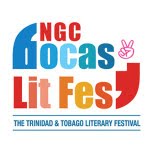 |
| Art Connect |
SINCE, as one student featured in the documentary Art Connect states, art is a picture of life, this film stands on its own as a sublime work.
Ostensibly about a social intervention programme for a group of students in Laventille, the work turns out to be an acute observation of contemporary social conditions in Trinidad and Tobago. It's insights are sometimes subtle and understated: telling of absent parents, emotional violence, the impact of drugs and crime on communities, mental and emotional turmoil, communal prejudices. But also, refreshingly, it sings of the redemptive possibilities of love, trust and beauty. Though there is tension and danger, all hope is not lost.
We follow the group of students of the Success Laventille School as they participate in a series of projects and challenges marshaled by artists in different mediums. But we also hear them tell their own stories about their lives, through a series of unforgettable interviews conducted by the filmmakers (including Janine Fung). And, most memorably, we are gifted with footage filmed by the students themselves using point-of-view cameras. We learn of their conditions, hear of their family problems, see where they live and what they eat, what chores they do, whom they interact with and account to.
"What's one of the happiest days of your life?" a student is asked.
"I don't have one," the child answers.
"What about a happy moment?"
"One of the happy moments was when I found out I got into this programme but I don't really have happy moments," states the girl. At another stage the girl says, "I actually feel nervous when I hear... gunshots because I don't know if my brother picked up one or my dad."
Another student states, "I feel that I cannot talk and I don't know why."
Sadly, these students could be in any school anywhere in the country. They articulate universal anxieties, as well as peculiar problems which communities are today dealing with. The film, which premiered in the first week of the Trinidad and Tobago Film Festival, gives voice to open secrets, and in this way, does a kind of justice, asserting dignity and grace. It has deservedly attracted sold-out screenings. Trinidadians have been yearning to see themselves.
This is an assured documentary whose craft is concealed but whose achievement cannot be overstated. Here are several different narratives which unfold through the use of the point of view footage; the interviews; pop music; supplemental footage and the mediums of song, dance and painting. That all these elements fuse effortlessly is to the credit of director and editor Miquel Galofré, who has steadily cemented his status as an exciting and talented chronicler of this region through a series of bravura films.
Galofré is a multiple-award-winning filmmaker born in Barcelona and based in Trinidad and Tobago. His “Jamaican trilogy” of documentaries - including Why Do Jamaicans Run So Fast? and Hit Me With Music - won several prizes. His eye for pacing, his exquisite judgment on the use of music as well as the restraint of his cinematographer (Fung) means this does not feel like a gimmick, nor does it come across as a sterile social experiment. Instead, it feels real.
On the music, I found that the film provided an interesting glimpse of how popular music - foreign and local - functions in our lives. Through music, and art generally, we do ultimately come together no matter how unique our circumstances. As EM Forster once extolled, "only connect".
*
*
Miquel Galofré's website.




















No comments:
Post a Comment